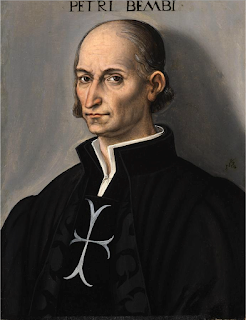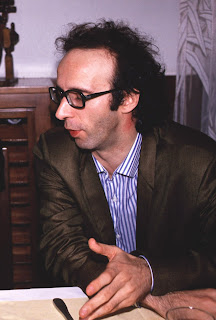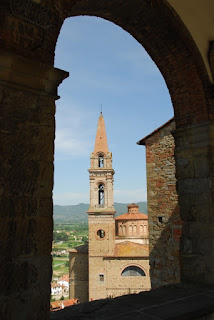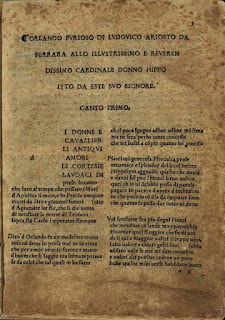Politically astute poet wrote an ode to Emperor Charles V
 |
| Veronica Gambara, as portrayed by Antonio Allegri, known as Il Correggio |
Veronica Gambara, a lyric poet who ruled the state of
Correggio for 32 years, was born on this day in 1485 in Pralboino in the
province of Brescia.
Under her rule, the court of Correggio became an important
literary salon visited by many writers and artists.
Gambara signed a treaty with the Holy Roman Emperor, Charles
V, which guaranteed Correggio would not be besieged and in her political poems
she expressed Italy as an entity centuries before unification.
Gambara came from an accomplished family, one of the seven
children of Count Gianfrancesco da Gambara and Alda Pio da Carpi.
The humanist poets Ginevre and Isotta Noarola were her great
aunts and Emilia Pia, the principal female interlocutor of Baldassare
Castiglione’s Il Cortegiano, was her aunt.
Gambara studied Latin, Greek, philosophy and theology and by
the age of 17 had begun corresponding with the poet, Pietro Bembo, who later
became her mentor when she sent him her poetry to read.
When Gambara was 24 she married her cousin, Giberto, Count
of Correggio, a widower aged 50, and they had two sons, Ippolito and Girolamo.
After her husband’s death in 1518, Gambara took charge of the state, which included
managing Correggio’s condottieri. She also supervised the education of her two
sons and her stepdaughter, Costanza.
 |
| Pietro Bembo was an influence on Gambara's poetry |
With Gambara at its head, the court of Correggio was visited
by important figures such as Pietro Bembo, Gian Giorgio Trissino, Marcantonio
Flaminio, Ludovico Ariosto and Titian.
Although Gambara’s poems were not published during her
lifetime they were circulated in manuscript form. About 80 of her poems and 50
of her letters are still in existence.
She composed poems on political issues, devotional poems and
love poems dedicated to her husband. She also corresponded with the poet
Bernardo Tasso and Emperor Charles V.
After allying Correggio with the Holy Roman Empire, Gambara
personally received the Emperor in Correggio in 1530, when she composed an ode
to him in Latin. They signed a treaty together guaranteeing Correggio’s safety.
This was broken in 1538 when the Count of Mirandola and Concordia launched an
attack on Correggio but Gambara organised a successful defence and saw to it
that Charles V paid for improved fortifications.
Gambara died in June 1550. A complete English translation of
her poems was published in 2014.
 |
| The 18th century Palazzo Gambara in Pralboino |
Travel tip:
Pralboino, where Veronica Gambara was born, is a village in
the province of Brescia in Lombardy. It is about 35 kilometres to the south of
the city of Brescia. The 18th century Palazzo Gambara was built on the site of
a previous 13th century castle, where the poet lived until her marriage to the
Count of Correggio.
 |
| The Corso Giuseppe Mazzini in Correggio |
Travel tip:
Correggio, which was ruled by Veronica Gambara between 1518
and 1550, is a town in the Emilia-Romagna region. The Renaissance painter
Antonio Allegri, who was known as Il Correggio, was born there in 1489. One of
the main sights in Correggio is the elegant Palazzo dei Principi in Corso
Cavour. In 1659 Correggio was annexed to the Duchy of Modena. The present Duke
of Modena, Prince Lorenz of Belgium, Archduke of Austria-Este, is the current
holder of the title of Prince of Correggio.






